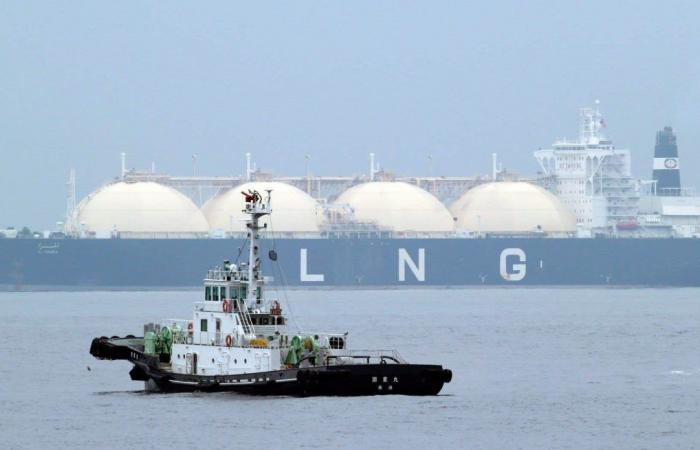The state-owned Export Development Canada (EDC) has just provided funding of $400 to $500 million for the Cedar LNG floating liquefaction plant project in British Columbia. Prime Minister Justin Trudeau also welcomed the construction of the complex which will be supplied by the Coastal GasLink pipeline, which mainly transports gas exploited by fracking.
According to what EDC specified in response to questions from the Duty, the financing agreement, which provides for a loan of $400 million to $500 million, will be used to “support the construction of the Cedar LNG floating facility and related onshore infrastructure.” “The financing granted by EDC to this project is part of its desire to support the global energy transition and the economic reconciliation of Indigenous people,” adds the state-owned company.
The Cedar LNG project, led by the Haisla First Nation and the Pembina Pipeline Corporation, is designed for the export of liquefied natural gas (LNG) by LNG tankers to the Asia-Pacific market from 2027. Its floating liquefaction plant will be able to process 11 .3 million cubic meters of gas every day and thus produce 3.3 million tonnes of LNG each year. The cost of the project is estimated at $5.5 billion.
The natural gas will come from the Montney formation, where it is trapped in so-called “tight” reservoirs which require fracturing operations to extract it. The gas will be transported to the Cedar LNG complex, located in the same region as the LNG Canada megaproject, by the Coastal GasLink network, the construction of which sparked intense controversy and the national rail blockade crisis in early 2020. In the midst of the crisis of COVID-19, EDC granted a loan of up to $500 million to the multinational TC Energy to help finance the construction of this gas pipeline.
« Transition »
Even though it is a project directly linked to the fossil fuel industry, EDC sees it as a way to support “the transition to a low-carbon future”.
The state corporation also argues, in its written response, that it “recognizes the urgent need to take action on climate change.” “As Canada’s export credit agency, it is committed to fostering a low-carbon economy while fulfilling its mandate: supporting Canadian exporters and increasing the country’s competitiveness in global markets. »
In a “decision statement” dated March 2023 and signed by federal Environment Minister Steven Guilbeault, the Canadian government specified that the project must achieve “carbon neutrality” by 2050. This “net zero emissions” target does not take into account the exploitation of natural gas or its use once exported.
In this industrial complex, production will be powered by hydroelectricity, which means that it will have “one of the lowest greenhouse gas emissions intensity in the world, compared to other LNG projects,” according to Ottawa. A message echoed this week by Minister Justin Trudeau, who released a video to welcome the official start of the natural gas export project.
LNG ships
The proponent will also have to implement “a plan to mitigate the impacts arising from maritime transport in the region”. According to what the impact study specifies, there are 17 species of marine mammals found in the region, including 10 designated under the Species at Risk Act. All these species are sensitive to disruption linked to commercial transport, which will be amplified in the region due to the completion of the LNG Canada (annual production of 14 million tonnes of LNG) and Cedar LNG projects.
Even if the Cedar LNG project is presented as an element of the energy “transition”, the Impact Assessment Agency of Canada (AEIC) produced a very critical report of another liquefied natural gas export megaproject. , GNL Québec, by rejecting the environmental claims of the promoters.
The federal agency concluded that the GNL Québec project would harm Canada’s climate efforts, and in particular the achievement of “carbon neutrality” by 2050. The document therefore rejected outright the promoter’s assertions according to which the export project of natural gas would be beneficial in the fight against the climate crisis.
The AEIC report also dismissed GNL Québec’s argument that natural gas would be a partner in the “energy transition”. The document rather recalls that the International Energy Agency published an analysis in 2021 which concludes that countries must “renounce” authorizing the development of “new oil and gas sites” in order to respect the objectives of the Agreement of Paris on the climate.
The Trudeau government rejected the GNL Québec project.






